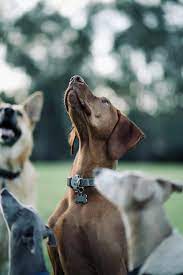Choosing the Right Dog Collar: A Guide for Pet Owners

When it comes to selecting the perfect dog collar for your furry friend, there are several factors to consider. From comfort and safety to training needs, the right collar can make a significant difference in your dog’s overall well-being. Let’s explore the various types of dog collars and how to choose the best one for your pup.
Types of Dog Collars
Breed and temperament of your dog. Dogs with smaller heads and slender necks, like greyhounds, might benefit from the support of a martingale collar, while a head halter would be a better fit for a big, energetic German shepherd. Take your dog’s build and walking etiquette into account when making your choice.
How much training does your dog need? Does your pup behave on a leash, or do they struggle and pull to get their way? Dogs who pull usually need a collar meant for training, like a harness or martingale. Consider your training goals and struggles before you buy. Never leave training collars and harnesses on your dog when they’re unattended or left home alone, or they could cause injury.
Take your dog’s growth into account. If you’re buying a collar for your puppy, make sure to check the tightness as your dog grows. You should be able to slip two fingers under the collar. This ensures that it’s not too tight around your pup’s neck but is snug enough so they can’t slip away if they spot a squirrel.
Given below are some types of collars that will help you find the right pick for your dog:
- Flat-Buckle Collar
These simple collars buckle, or snap closed and are the most popular choice for pet owners. Available in various sizes and materials, flat-buckle collars can also be fashion-forward. Some come with light-reflective strips, which are useful for nighttime walks. Ideal for securing ID tags to your dog’s neck.
- Martingale Collar
Designed specifically for dogs with narrow heads (such as Greyhounds and other sighthounds). Helps prevent anxious or fearful dogs from slipping out. The collar features a strip of material with rings on each end, attached to a smaller loop. When your dog tries to back out, the collar tightens without choking them. Often used as an alternative to choke collars.
- Choke Collar/Chain
Not recommended as a safe option for your pet. These collars tighten around the neck when the control loop is pulled. Lack of safety features can cause throat damage and other injuries to your dog. Avoid using choke collars for your dog’s well-being.
- Prong/Pinch Collar
Also not recommended due to the risk of misuse. Prong collars have small, blunt, metal prongs on the inside. These prongs dig into your dog’s skin when the leash is pulled. Choose safer alternatives for training and walking your dog.
- Body Harness
A popular choice for small dogs or those with delicate throats. Body harnesses are gentler on the neck and distribute pressure more evenly. Consider a front-hook harness if your dog tends to pull on the leash. The front attachment gives the handler more control and requires less strength.
- Head Halter
The head halter is designed to fit around your dog's head just behind the ears, while another strap fits around your dog's muzzle. There are also under-the-chin versions. These types are good for large, strong dogs that like to pull. These are also known as gentle leads/gentle leaders.
Because the head collar is placed around the dog's muzzle, you need to have it fitted to your dog. It is not meant to be used to jerk or aggressively pull your dog. Instead, it's meant to be used as a tool to help gently guide your dog in the direction you want to go.
- Flea/tick collar
These collars can be worn along with regular collars. They have chemicals that help your dog stay protected against fleas and ticks. To be effective, you need to make sure they fit your dog well. Keep track of how long the collar is active and change it as needed.
- Vibrating collar
This collar uses a vibrating sensation to get your dog's attention. This can be useful for deaf dogs that can't hear your voice.
- Elizabethan collar
This collar is used to help prevent your dog from licking or scratching if they have a wound or have had a procedure done at the vet. The dog should be able to eat and drink while wearing the collar but should not be able to reach the part of their body that's healing.
- GPS collar
This collar comes equipped with global positioning satellite technology to help you find your dog if they get lost. Research the collar's tracking range, functionality, battery life, cost, subscription price, and product support.
Collars to avoid
Some vendors sell what are known as aversion collars that deliver physical discomfort or pain to teach the dog what to do. Examples of aversion collars include:
- Choke chain collars that use metal links to control your dog
- Pinch collars made of fang-shaped metal links that dig into your dog's skin
- Shock collars with metal contact points that use an electrical current to give your dog a shock
- While these types of collars may temporarily stop unwanted behaviour, they don't teach your dog what you would like them to do. Instead, the aversion collars cause fear, anxiety, and sometimes aggression.
- Stay away from dog tools that may harm your pets. It is better to invest more time in training and helping your dogs learn how to behave instead of using restrictive tools.






